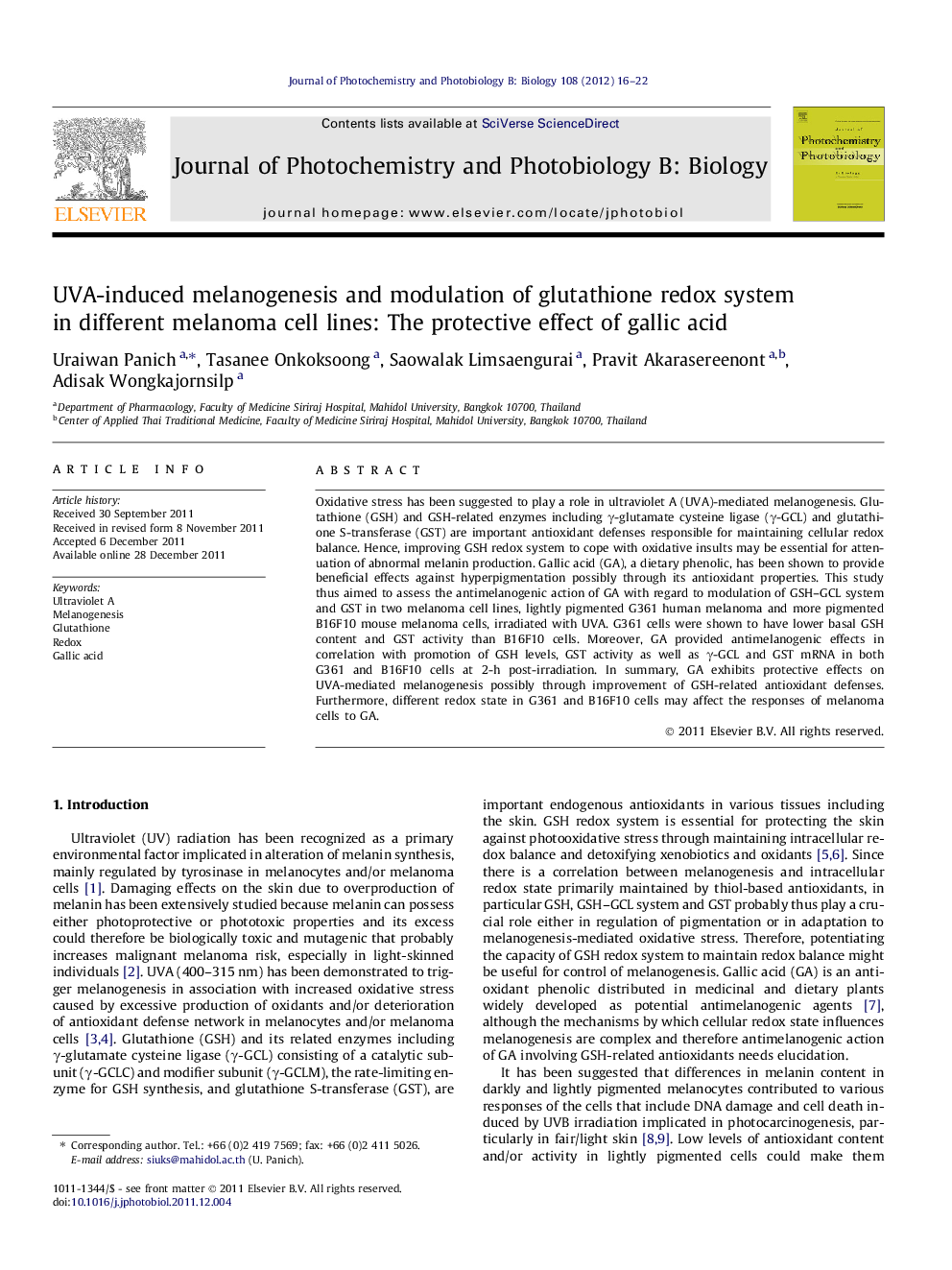| Article ID | Journal | Published Year | Pages | File Type |
|---|---|---|---|---|
| 30602 | Journal of Photochemistry and Photobiology B: Biology | 2012 | 7 Pages |
Oxidative stress has been suggested to play a role in ultraviolet A (UVA)-mediated melanogenesis. Glutathione (GSH) and GSH-related enzymes including γ-glutamate cysteine ligase (γ-GCL) and glutathione S-transferase (GST) are important antioxidant defenses responsible for maintaining cellular redox balance. Hence, improving GSH redox system to cope with oxidative insults may be essential for attenuation of abnormal melanin production. Gallic acid (GA), a dietary phenolic, has been shown to provide beneficial effects against hyperpigmentation possibly through its antioxidant properties. This study thus aimed to assess the antimelanogenic action of GA with regard to modulation of GSH–GCL system and GST in two melanoma cell lines, lightly pigmented G361 human melanoma and more pigmented B16F10 mouse melanoma cells, irradiated with UVA. G361 cells were shown to have lower basal GSH content and GST activity than B16F10 cells. Moreover, GA provided antimelanogenic effects in correlation with promotion of GSH levels, GST activity as well as γ-GCL and GST mRNA in both G361 and B16F10 cells at 2-h post-irradiation. In summary, GA exhibits protective effects on UVA-mediated melanogenesis possibly through improvement of GSH-related antioxidant defenses. Furthermore, different redox state in G361 and B16F10 cells may affect the responses of melanoma cells to GA.
► Gallic acid (GA) inhibited UVA-induced melanogenesis in melanoma cells. ► The antimelanogenic effects of GA correlated with promotion of GSH redox system. ► A single dose of UVA radiation mediated time-course changes in antioxidant defenses. ► Different pigment cell types displayed different basal redox state.
